Samsung Wave S8500 Preview

This review has been updated on April 19.
This is a global GSM phone. It can be used with AT&T and T-Mobile USA, but without 3G.
Samsung Wave S8500 Release Date - April, 2010
This is a global GSM phone. It can be used with AT&T and T-Mobile USA, but without 3G.
Samsung Wave S8500 Release Date - April, 2010
Introduction:

The Samsung Wave S8500 has the new TouchWiz 3.0 interface, which makes the handset look like a typical Samsung feature phone. So we guess bada is to be an accessible, easy to use OS, which will still allow the user to install native applications that will be able to use the rich system resources in order to deliver a much deeper experience. So now that we've got a prototype unit of the Samsung Wave S8500, we are eager to present you our impressions of the new software platform and, of course, of the nice and shiny phone the Wave is.
Design:
Oh, the Samsung Wave S8500... that's one very hot handset that sports a metal chassis, and looks somewhat similar in style to the Google Nexus One. Well, it may look very similar to the Nexus One and may have almost the same dimensions, but there's one important difference - the screen of the Wave measures 3.3 inches, while the Nexus One has a 3.7-inch one. Except for that one issue, we are perfectly happy with this display. Like every AMOLED, it delivers great contrast, blacks are really pitch black, and colors are incredibly vivid. However, Samsung has utilized a new “Super AMOLED” technology, which, in theory, should provide even better image quality and less reflection. The manufacturer has achieved this by removing the panel for the touch sensor and the air gap between the AMOLED and the touch sensor. This should also allow for better visibility under bright sunlight, which is something not very common for AMOLEDs. We compared the Wave's screen with the LCD one of the iPhone 3G and it was better in almost every respect. When indoors, the Super AMOLED provides a lot more clarity and saturation, while its viewing angle is incomparably wider. The Wave is indeed quite usable when outdoors, but still the iPhone 3G demonstrated its supremacy here. We will compare the Samsung Wave S8500's Super AMOLED with a traditional AMOLED screen in our review.
It doesn’t end here though. Samsung has covered the display with tempered glass, which is really firm, and has even applied an oleophobic (from the Greek “oleo” – oil) coating so it doesn’t get the annoying fingerprint smudges. The end result is near perfect. The WVGA resolution makes the image very crisp and clear.

You can compare the Samsung Wave S8500 with many other phones using our Size Visualization Tool.
Alright, we told you how great the screen is, and you’ve already seen how good the phone looks. So that's why we want to congratulate Samsung for the appreciable work they have done with the Wave's design.
We won't waste time here describing the key configuration on the Samsung Wave S8500, because you can see that on the images. Rather, we will tell you that they are all very pleasant to use, as they have a nice click, so you can never mistake when you've pressed a button. On the whole, the build quality of the Wave is great. It is obvious that Samsung wanted to come up with a killer handset for the introduction of bada, and we've got to admit they have achieved very good results here in the design department.
Samsung Wave S8500 360 Degrees View:
Partners: Ready to buy the Samsung Wave? Order today at Dial-a-Phone in the UK.
Interface:
The Samsung Wave S8500 uses TouchWis 3.0, which, of course, looks a lot like what we have previously seen from Samsung's touchscreen devices, bringing some nice visual improvements. However, to start with, we would like to note that the Wave runs perfectly smooth. There's no lag anywhere in the interface, which comes as a surprise from Samsung's TouchWiz UI, as it has been suffering from severe lag from time immemorial. Now, we are not sure if the Wave's flawless performance is due only to the 1GHz processor inside it, or it’s bada that makes things run smooth, but we can tell you that it is way more enjoyable to use the Wave, than any other TouchWiz phone . Using the Samsung Wave S8500 is like using the iPhone 3GS - you get a perfectly smooth experience, which isn't something you see every day.
New stuff:
The changes in TouchWiz 3.0 are mostly visual, but there are still some functional tweaks that we are glad to see. You can now have more than three home screen pages (they should be up to 10), and the widgets are stored in a field at the bottom of the screen. Like before, the main menu consists of several pages and the icons' arrangement can be customized to suit your taste. At the upper end of the interface is a drawer that houses switches for Wi-Fi, Bluetooth and Silent mode, as well as notifications, similarly to Android.
One functional difference is the phonebook, which now allows you to link your contacts to their IM (you can choose from AIM, Windows Live, Yahoo, Skype, QQ and Google Talk) and social accounts (Facebook, MySpace, Twitter). You can track each contact’s latest online activity through the phonebook application, which is called SNS functionality (from Social Network Service). SNS is also used in various other phones such as the LG GW620, LG Pop and Samsung Lindy. Another neat new feature is the so called “Ultimate Inbox”, which allows you to see all the emails from your separate inboxes in one single inbox. As a whole, working with email on the Wave seems to be a pleasant experience (we couldn’t test it because our prototype has its networking features off, but at least we could create some accounts and play with the interface a little bit). The last heavily stressed on feature is the Push Calendar. Basically, the Wave’s calendar can be synchronized with other calendars like Facebook’s and Google’s, so you’ll be getting live notifications about upcoming events.
We are always glad to see improvements being made to the internet browser. The Samsung Wave S8500 brings a new version of the WebKit-based Dolphin browser – 2.0, which, by the looks of it, is capable enough to offer a decent web browsing experience. We don't want to jump to conclusions just yet, as our unit is far from final, but still - loading and scrolling around a page was adequate. The screen supports multitouch so you can use the pinch-to-zoom gesture, and another thing that made us an impression was that you need to double-tap on a link, in order to activate it. This will positively minimize the chances of accidental link presses.
Now that Samsung has cooked a smart operating system for you, it has also provided a tool for you to track your system resources. For the purpose, you have the System Manager, which presents you with information about the remaining battery life, current CPU usage, detailed memory status, and active applications. Speaking of active applications, you can utilize multitasking for the system apps like the browser, music player, email and so on, but unfortunately you won’t be able to multitask third-party native apps.
Samsung Apps will be the application store found on bada phones. Unfortunately, we didn’t have it on our unit, so we couldn’t check it out and see what the users will benefit from having a bada smartphone. Samsung Apps will be available at the Samsung Wave’s launch and should offer an extensive lineup of applications if the manufacturer wants bada to be competitive on the smartphone market. Its strongest rivals as of now are Apple with the App Store and Google with the Android Market. We have seen videos of graphics-intensive games running on the Wave, so we know this platform has what it takes to offer great entertainment to its users. We also know that Samsung has the resource to support a rich app ecosystem, which means it just needs to play its cards right to become competitive in the short term.
The Samsung Wave S8500 uses TouchWis 3.0, which, of course, looks a lot like what we have previously seen from Samsung's touchscreen devices, bringing some nice visual improvements. However, to start with, we would like to note that the Wave runs perfectly smooth. There's no lag anywhere in the interface, which comes as a surprise from Samsung's TouchWiz UI, as it has been suffering from severe lag from time immemorial. Now, we are not sure if the Wave's flawless performance is due only to the 1GHz processor inside it, or it’s bada that makes things run smooth, but we can tell you that it is way more enjoyable to use the Wave, than any other TouchWiz phone . Using the Samsung Wave S8500 is like using the iPhone 3GS - you get a perfectly smooth experience, which isn't something you see every day.
New stuff:
The changes in TouchWiz 3.0 are mostly visual, but there are still some functional tweaks that we are glad to see. You can now have more than three home screen pages (they should be up to 10), and the widgets are stored in a field at the bottom of the screen. Like before, the main menu consists of several pages and the icons' arrangement can be customized to suit your taste. At the upper end of the interface is a drawer that houses switches for Wi-Fi, Bluetooth and Silent mode, as well as notifications, similarly to Android.
One functional difference is the phonebook, which now allows you to link your contacts to their IM (you can choose from AIM, Windows Live, Yahoo, Skype, QQ and Google Talk) and social accounts (Facebook, MySpace, Twitter). You can track each contact’s latest online activity through the phonebook application, which is called SNS functionality (from Social Network Service). SNS is also used in various other phones such as the LG GW620, LG Pop and Samsung Lindy. Another neat new feature is the so called “Ultimate Inbox”, which allows you to see all the emails from your separate inboxes in one single inbox. As a whole, working with email on the Wave seems to be a pleasant experience (we couldn’t test it because our prototype has its networking features off, but at least we could create some accounts and play with the interface a little bit). The last heavily stressed on feature is the Push Calendar. Basically, the Wave’s calendar can be synchronized with other calendars like Facebook’s and Google’s, so you’ll be getting live notifications about upcoming events.
We are always glad to see improvements being made to the internet browser. The Samsung Wave S8500 brings a new version of the WebKit-based Dolphin browser – 2.0, which, by the looks of it, is capable enough to offer a decent web browsing experience. We don't want to jump to conclusions just yet, as our unit is far from final, but still - loading and scrolling around a page was adequate. The screen supports multitouch so you can use the pinch-to-zoom gesture, and another thing that made us an impression was that you need to double-tap on a link, in order to activate it. This will positively minimize the chances of accidental link presses.
Now that Samsung has cooked a smart operating system for you, it has also provided a tool for you to track your system resources. For the purpose, you have the System Manager, which presents you with information about the remaining battery life, current CPU usage, detailed memory status, and active applications. Speaking of active applications, you can utilize multitasking for the system apps like the browser, music player, email and so on, but unfortunately you won’t be able to multitask third-party native apps.
Samsung Apps will be the application store found on bada phones. Unfortunately, we didn’t have it on our unit, so we couldn’t check it out and see what the users will benefit from having a bada smartphone. Samsung Apps will be available at the Samsung Wave’s launch and should offer an extensive lineup of applications if the manufacturer wants bada to be competitive on the smartphone market. Its strongest rivals as of now are Apple with the App Store and Google with the Android Market. We have seen videos of graphics-intensive games running on the Wave, so we know this platform has what it takes to offer great entertainment to its users. We also know that Samsung has the resource to support a rich app ecosystem, which means it just needs to play its cards right to become competitive in the short term.
Camera:
The 5MP camera of the Samsung Wave S8500 has autofocus and an LED flash. It is also able to record 720p HD videos. The camera interface is pretty simple, with simple black and white buttons. It may lack the eye candy, but is very easy to use. It works very fast as well.
Both indoor and outdoor shots made with our unit look well, with good detail levels. Colors are a bit washed out though, but jumping to conclusions based on the performance of a prototype is not really our thing. The HD video we captured however was nothing short of great, with high frame rate of 29.97. With such a performance, the Samsung Wave S8500 can easily replace your pocket camcorder. In addition to the video sample from the Wave, we have also included a video sample made with the Flip Mino HD so you can compare them. The camera of the Wave makes things slightly more overexposed, but we should not forget this is a prototype.
Samsung Wave S8500 sample video at 1280x720 pixels resolution.
Flip Mino HD sample video at 1280x720 pixels resolution
Multimedia:
When you have a Super AMOLED screen, you’d want to take full advantage of it. Samsung knows that and the Wave has the ability to playback HD video files in various formats like H.264, DivX and Xvid. Our unit had some trouble playing all kinds of videos, but we guess that’s a software issue that will get worked out by the time of the release.
The music player allows you to filter by different criteria very easily, thanks to the bar at the upper end. Turning the handset horizontally will display a nice interface with some more eye candy for you. The user experience is great, because of the perfectly smooth performance. We got the phone without any accessories, so we would have to wait for the review unit to see (actually, hear) what the sound quality through the headset from the box is. The speakerphone is bearable, with good loudness and much sharpness. On the whole, we’ve heard worse and better.
Expectations:
By the looks of it, Samsung has come up with a real winner in the form of its first bada smartphone, the Samsung Wave S8500 (note that we don’t even need to use the final unit to see if it will be great). It’s a good-looking device, which can compare to the greatest products in the high end not only in terms of design, but in terms of features too, sporting a gorgeous Super AMOLED screen and fast 1GHz Samsung processor. It will also support the latest in wireless technology with Bluetooth 3.0 and Wi-Fi 802.11n. The biggest obstacle for Samsung will be the need of a rich application ecosystem. Of course, we do not expect to see an extensive software catalog when the Wave launches in April, but if Samsung manages to catch up with the others fairly quickly, we will be ready to welcome bada as the next big thing in the world of mobile platforms.
Samsung Wave S8500 Video Preview:
The 5MP camera of the Samsung Wave S8500 has autofocus and an LED flash. It is also able to record 720p HD videos. The camera interface is pretty simple, with simple black and white buttons. It may lack the eye candy, but is very easy to use. It works very fast as well.
Both indoor and outdoor shots made with our unit look well, with good detail levels. Colors are a bit washed out though, but jumping to conclusions based on the performance of a prototype is not really our thing. The HD video we captured however was nothing short of great, with high frame rate of 29.97. With such a performance, the Samsung Wave S8500 can easily replace your pocket camcorder. In addition to the video sample from the Wave, we have also included a video sample made with the Flip Mino HD so you can compare them. The camera of the Wave makes things slightly more overexposed, but we should not forget this is a prototype.
Samsung Wave S8500 sample video at 1280x720 pixels resolution.
Flip Mino HD sample video at 1280x720 pixels resolution
Multimedia:
When you have a Super AMOLED screen, you’d want to take full advantage of it. Samsung knows that and the Wave has the ability to playback HD video files in various formats like H.264, DivX and Xvid. Our unit had some trouble playing all kinds of videos, but we guess that’s a software issue that will get worked out by the time of the release.
The music player allows you to filter by different criteria very easily, thanks to the bar at the upper end. Turning the handset horizontally will display a nice interface with some more eye candy for you. The user experience is great, because of the perfectly smooth performance. We got the phone without any accessories, so we would have to wait for the review unit to see (actually, hear) what the sound quality through the headset from the box is. The speakerphone is bearable, with good loudness and much sharpness. On the whole, we’ve heard worse and better.
Expectations:
By the looks of it, Samsung has come up with a real winner in the form of its first bada smartphone, the Samsung Wave S8500 (note that we don’t even need to use the final unit to see if it will be great). It’s a good-looking device, which can compare to the greatest products in the high end not only in terms of design, but in terms of features too, sporting a gorgeous Super AMOLED screen and fast 1GHz Samsung processor. It will also support the latest in wireless technology with Bluetooth 3.0 and Wi-Fi 802.11n. The biggest obstacle for Samsung will be the need of a rich application ecosystem. Of course, we do not expect to see an extensive software catalog when the Wave launches in April, but if Samsung manages to catch up with the others fairly quickly, we will be ready to welcome bada as the next big thing in the world of mobile platforms.
Samsung Wave S8500 Video Preview:
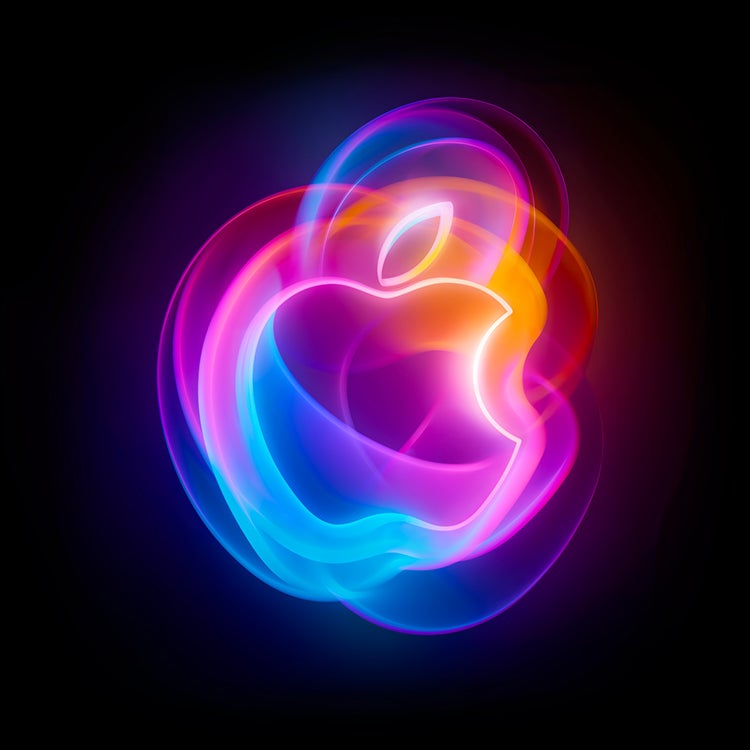


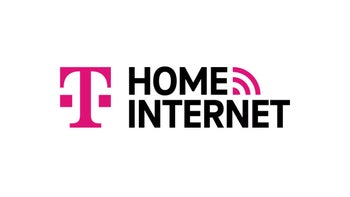

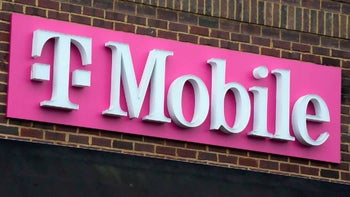
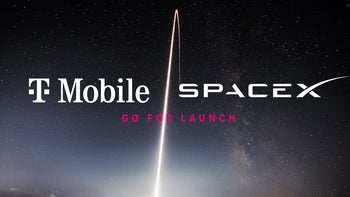



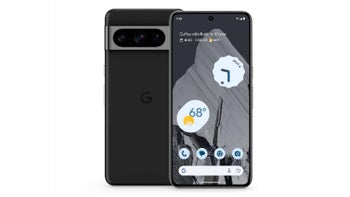
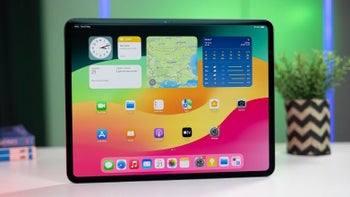
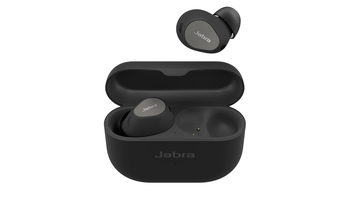
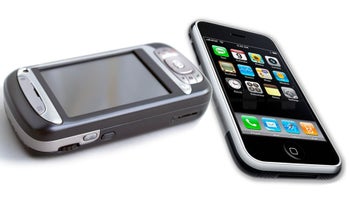

Things that are NOT allowed: